Reality Streaming

What are the latest trends in the entertainment industry ?
The entertainment industry is constantly evolving, with new trends emerging every year. Some of the latest trends include streaming services, virtual reality and augmented reality technologies, e-sports and live streaming, interactive content, and diversity and inclusion. Streaming services like Netflix and Hulu are becoming more popular as people cut the cord on cable subscriptions. Virtual reality and augmented reality technologies are being explored for use in gaming, movies, concerts, and live events. E-sports has become a major trend with millions of people tuning in to watch professional gamers compete. Interactive content creates a more engaging experience for audiences by allowing them to influence the outcome of a show or movie. Diversity and inclusion are also becoming increasingly important in the entertainment industry as studios and networks work to create more diverse casts and stories that reflect different cultures and perspectives.

How is streaming affecting traditional television and film production ?
Streaming services have revolutionized the entertainment industry, leading to significant shifts in viewing habits and production practices. Audiences now prefer on-demand content, which has reduced the appeal of scheduled programming on traditional television. Streaming platforms release entire seasons at once, allowing for shorter production cycles but also potentially impacting quality due to the accelerated pace. These services invest heavily in original content, leading to varied budget allocation and a direct-to-consumer model that changes revenue generation. They pioneer in experimenting with new genres and targeting niche markets, as well as promoting international content. Economically, streaming introduces new revenue streams and competition, leading to industry consolidation. However, challenges include quality control concerns due to rapid production and the need for self-regulation amidst increased creative freedom for creators. Overall, streaming presents both challenges and opportunities for innovation and diversity in media.
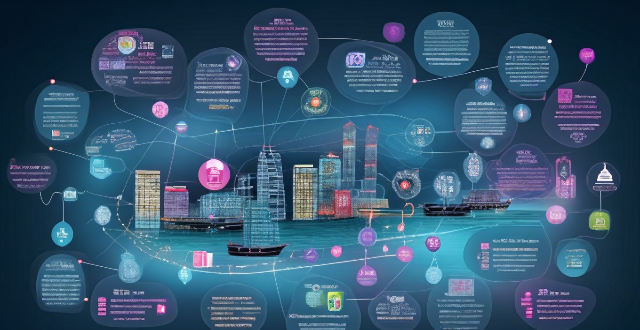
What role does audience feedback play in shaping future live streaming sessions ?
The article explores the crucial role of audience feedback in shaping future live streaming sessions. It discusses the importance of feedback in improving content relevance, enhancing interactivity, technical optimization, and building a community. The article also suggests strategies for implementing feedback collection, such as surveys, live chat analysis, social media engagement, and email subscriptions. Additionally, it emphasizes the need for data-driven decisions, transparency with changes, and an iterative approach to continuously improve live streaming sessions.
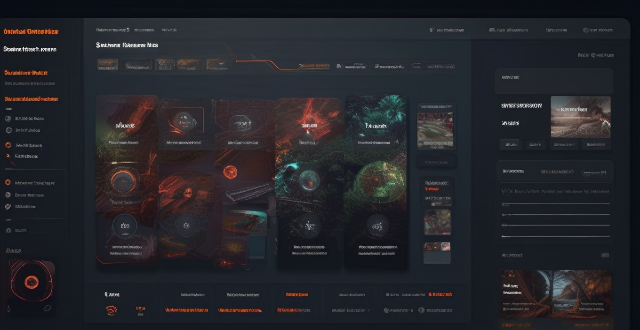
How have online streaming services changed the way we watch and follow sports events ?
The advent of online streaming services has revolutionized sports viewing by increasing accessibility, customization, and engagement. Fans can now watch live games from anywhere, use second screen experiences, follow favorite teams, and enjoy interactive and social media features during broadcasts. Economically, subscription models and advertising opportunities have expanded. However, challenges like buffering, latency, and piracy concerns must be addressed for sustainable growth in this domain.

Are there any popular reality shows that focus on exposing celebrity affairs ?
Reality shows have become a popular form of entertainment, but some focus more on exposing celebrity affairs than others. The Bachelor/Bachelorette, The Real Housewives franchise, Keeping Up with the Kardashians, Vanderpump Rules, and Married to Medicine are some of the most popular reality shows that expose celebrity affairs. These shows offer viewers an opportunity to see the drama unfold as celebrities navigate their personal lives in the public eye. However, it is important to remember that these shows may not accurately represent real-life situations.
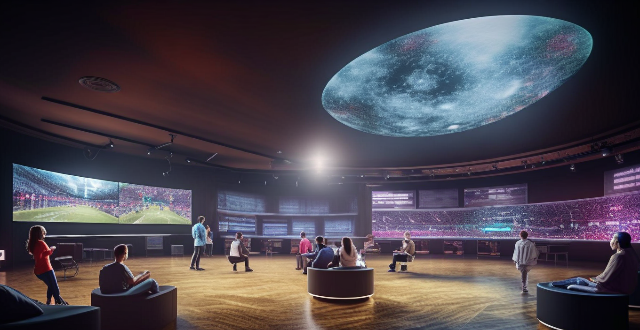
How has augmented reality transformed fan engagement in sports ?
Augmented Reality (AR) is revolutionizing fan engagement in sports by offering immersive experiences that blend physical and digital elements. AR enhances viewing experiences with interactive overlays and virtual seats, enables in-game interaction through team and player interaction and game day activities, boosts merchandise and sponsorship opportunities with interactive ads and virtual try-ons, aids navigation and wayfinding in stadiums, and encourages social sharing through augmented selfies and virtual reality social spaces. These advancements are transforming the way fans connect with sports and teams, creating more engaging and interactive experiences.

How has virtual reality technology been incorporated into sports equipment ?
The integration of virtual reality technology into sports equipment has revolutionized the way athletes train, perform, and recover from injuries. It also enhances fan engagement by providing unique perspectives of live sporting events. The main applications include simulation and training, performance analysis, rehabilitation and recovery, and fan engagement.
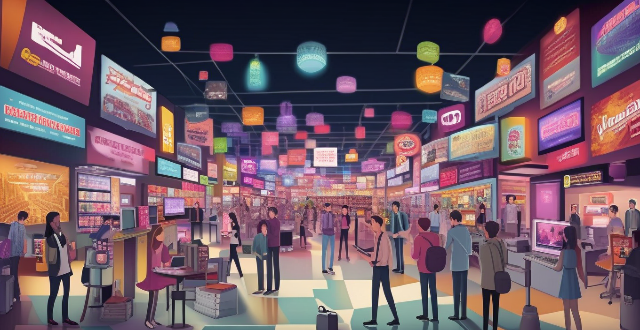
What are the emerging markets for entertainment content ?
The entertainment industry is constantly evolving, and with theThe entertainment industry is constantly evolving, and with the globalization, new markets are and with the advent of technology and globalization, new markets are emerging for entertainment content. Streaming services have revolutionized the way people consume entertainment content, mobile gaming has seen tremendous growth in recent years, Virtual Reality (VR) and Augmented Reality (AR) technologies are transforming the way people experience entertainment content, Esports has emerged as a major market for entertainment content, and Podcasts and audio content have gained popularity in recent years.

In what ways can virtual reality be utilized for medical training and therapy ?
Virtual reality is revolutionizing medical training and therapy by providing immersive, interactive experiences that simulate real-world scenarios. In medical training, VR offers hands-on practice in a safe environment, multisensory learning experiences, interactive anatomy education, and tools for surgical planning and collaboration. In therapy, it is used for pain management, motor skills rehabilitation, cognitive rehabilitation, mental health treatment, specialized interventions like ASD therapy, and neurorehabilitation. The potential of virtual reality in healthcare is vast, with ongoing technological advancements expected to bring further innovations in this field.

How can virtual reality and augmented reality be used to enhance transportation experiences ?
The article explores the potential of virtual reality (VR) and augmented reality (AR) technologies to improve transportation experiences. It outlines various ways in which these technologies can enhance safety, provide entertainment, and offer new interaction methods with vehicles and infrastructure. Key points include: 1. **Improving Safety** through VR simulation training for drivers and AR-guided maintenance manuals. 2. **Providing Entertainment** by creating virtual windows for passengers, offering immersive gaming experiences, and providing real-time public transportation updates. 3. **Offering New Ways of Interaction** with vehicles and infrastructure, such as personalized travel environments, augmented signage, and maintenance alerts. 4. The conclusion emphasizes the transformative potential of VR and AR in the transportation sector and anticipates further innovations as these technologies advance.

Are there any limitations on video streaming quality with unlimited data plans ?
Unlimited data plans offer convenience but may have limitations on video streaming quality due to factors like data throttling, network congestion, platform restrictions, and device capabilities. To optimize your experience, choose a reliable network provider, optimize your device settings, use high-quality platforms, and avoid peak usage hours.
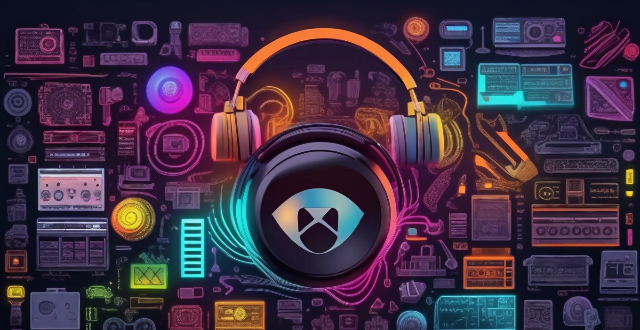
How are virtual reality and augmented reality changing the way we experience entertainment ?
Virtual reality and augmented reality technologies are revolutionizing entertainment by offering immersive, interactive, and personalized experiences. They have impacted various domains of entertainment, including gaming, movies, sports, and music. VR headsets provide an immersive gaming experience, while AR games bring gaming into the real world. VR cinema offers an immersive movie-watching experience, and AR applications enhance the viewing experience by adding virtual elements to the real world. Sports fans can enjoy a more immersive experience with VR platforms and AR applications that display real-time statistics and replays. Virtual concerts and AR-enhanced performances offer unique and personalized music experiences. Overall, these technologies make entertainment more engaging and enjoyable than ever before.

What is the role of technology in shaping future trends in the entertainment industry ?
Technology is a driving force in the entertainment industry, shaping future trends through advancements like streaming services, virtual and augmented reality, AI, blockchain, IoT, and 5G networks. These innovations offer personalized content, immersive experiences, decentralized platforms, and seamless connectivity across devices.

How has technology influenced the way we consume media and entertainment ?
The influence of technology on media and entertainment consumption is vast. Technology has revolutionized the way we consume media and entertainment, from the invention of the television to the rise of streaming services. The rise of digital media, personalization and customization, on-demand content, multi-platform accessibility, and interactive experiences and augmented reality are some of the key ways in which technology has influenced our media habits. As technology continues to advance, it is likely that our consumption habits will continue to evolve as well.

What are some creative ways to involve my audience in live streaming content ?
Engaging Your Audience in Live Streaming Content Live streaming is a popular way for content creators to connect with audiences. Engaging viewers in real-time enhances the viewing experience and fosters community around your content. Here are some creative ways to engage your audience during live streams: 1. Interactive Polling and Quizzes Integrate polling tools like Slido or Mentimeter into your live stream to get immediate feedback from viewers. Ask questions related to the content you're streaming, allowing viewers to participate actively. Organize quizzes where viewers can answer questions related to your topic. Reward correct answers with shout-outs, digital badges, or small prizes to encourage participation. 2. Live Q&A Sessions Set aside time during your live stream for Q&A sessions where viewers can submit questions. Answer viewer questions on the spot, making them feel heard and valued. Promote a Q&A session ahead of time, allowing viewers to submit questions beforehand. Address pre-submitted questions during the stream, ensuring a steady flow of engagement. 3. Co-Streaming and Guest Appearances Invite guests to join your live stream, adding fresh perspectives and attracting a wider audience. Co-stream with other creators, cross-promoting each other's channels and expanding your reach. Feature viewer comments or reactions on screen, giving them a chance to be part of the stream visually. Incorporate viewer suggestions into the stream if possible, showing that their input is valued. 4. Interactive Games and Challenges Host games that viewers can play along with you, such as trivia or word association games. Create challenges specific to your content niche, encouraging viewers to engage creatively. Offer rewards for active participation, like exclusive access to content or personal shout-outs. Implement a point system where viewers earn points for interactions, which can be redeemed for perks. 5. Social Media Integration Use social media hashtags to create buzz around your live stream and encourage interaction outside the platform. Promote viewer posts on your story or feed, giving them more visibility and encouraging others to engage. Share behind-the-scenes clips on social media, giving viewers a sneak peek of what's coming up. Post live updates during the stream, keeping followers engaged who are not watching live. 6. Personalized Shout-Outs and Acknowledgments Give shout-outs to viewers who consistently engage with your streams. Celebrate milestones like subscriber counts or special events with personalized messages. Showcase viewer-created content related to your stream, such as fan art or cosplay. Feature viewer profiles on your social media, promoting a sense of community among your fans.

How can augmented reality transform traditional teaching methods ?
Augmented Reality (AR) can revolutionize traditional teaching methods by providing an interactive and immersive learning experience. It can make learning more engaging, provide personalized feedback and guidance, facilitate group projects and remote collaboration, and provide contextual learning and virtual field trips. Incorporating AR into the classroom can create a more engaging and effective learning environment for students.
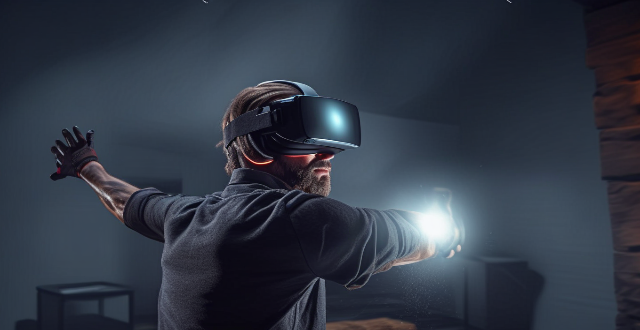
Can virtual reality training improve athlete skills ?
Virtual reality (VR) technology has been increasingly utilized in sports training, raising the question of whether it can improve athlete skills. The answer depends on several factors, including the type of sport and specific skills required. VR platforms offer a novel medium to develop cognitive skills such as concentration and alternating attention. They can be highly beneficial for sports requiring precision and accuracy, providing a controlled environment for repeated practice and immediate feedback. However, VR should not replace traditional physical training entirely but be used as a supplementary tool. Additionally, VR can help athletes mentally prepare for competition by simulating game scenarios and practicing decision-making skills under pressure. The effectiveness of VR training depends on various factors, and its evolution in sports training programs will be interesting to observe as technology advances.

How does Apple Music compare to other music streaming services like Spotify or Tidal ?
This text compares Apple Music, Spotify, and Tidal in terms of their user interfaces, music libraries, audio quality, pricing, and additional features. Apple Music integrates seamlessly with Apple devices and offers personalized recommendations, while Spotify emphasizes social sharing and collaboration. Tidal focuses on high-quality audio and exclusive content from artists. The choice between these services depends on personal preferences and priorities when it comes to music streaming.

What are the current trends in educational game development ?
The text describes the current trends in educational game development. These trends include gamification, personalized learning, collaborative learning, real-world applications, and augmented reality (AR) and virtual reality (VR). Gamification involves incorporating game elements into non-game contexts, such as education. Personalized learning focuses on tailoring the learning experience to individual students' needs and preferences. Collaborative learning encourages students to work together towards a common goal. Real-world applications help students understand how the concepts they are learning can be applied in practical situations. Augmented reality (AR) and virtual reality (VR) technologies provide immersive experiences that enhance learning. These trends aim to make learning more engaging, personalized, collaborative, applicable, and immersive for students.

What impact does virtual reality have on education ?
Virtual reality (VR) is a rapidly evolving technology that has the potential to revolutionize the way we learn and teach. It offers an immersive, interactive experience that can engage students in new and exciting ways. In this article, we will explore the various impacts of virtual reality on education. One of the most significant benefits of VR in education is its ability to create realistic simulations. These simulations allow students to experience complex concepts and scenarios that would be difficult or impossible to replicate in a traditional classroom setting. For example, medical students can practice surgical procedures without risking harm to real patients, while history students can explore ancient civilizations and witness historical events firsthand. VR also increases student engagement by making learning more interactive and fun. Instead of passively listening to lectures or reading textbooks, students can actively participate in their learning through immersive experiences. This increased engagement can lead to better retention of information and improved academic performance. With the rise of online education, VR can provide students with access to resources and opportunities that may not be available in their local area. Students can attend virtual field trips, visit museums and historical sites, and even attend classes at prestigious universities from anywhere in the world. VR also has the potential to make education more inclusive for students with disabilities or those who may struggle in traditional classroom settings. For example, students with social anxiety can practice public speaking in a safe, controlled environment, while those with physical disabilities can participate in activities that may be otherwise inaccessible. VR allows students to work on projects together in a virtual space, fostering collaboration and teamwork skills. They can create 3D models, design virtual environments, and even program their own games or applications. This type of hands-on learning encourages creativity and problem-solving skills. VR also enables global collaboration between students from different countries and cultures. Students can work together on projects, share ideas, and learn from one another in real-time. This exposure to diverse perspectives can broaden their understanding of the world and prepare them for success in an increasingly globalized workforce. While the potential benefits of VR in education are numerous, there are also challenges and considerations that must be addressed. These include cost, technical requirements, health concerns, and educational effectiveness. A balanced approach that incorporates both technologies is essential for optimal outcomes.

How can virtual reality be used in sports training ?
The article discusses the potential applications of virtual reality (VR) in sports training, including mental rehearsal, skill development, physical training, and team building. VR can simulate game scenarios, provide immediate feedback on technique, create realistic environments for practicing skills, and facilitate collaborative training. It also offers a distraction-free environment for injury recovery and an engaging workout experience. The technology is expected to play an increasingly important role in enhancing athletic performance across various sports.

How has virtual reality technology evolved over the past few years ?
Over the past few years, VR technology has significantly evolved, transforming from a niche to a mainstream platform for gaming, education, and various applications. Key developments include hardware improvements such as lighter designs and higher resolution displays; software advancements like enhanced graphics and expanded content libraries; and application expansion into fields like healthcare and architecture. Future outlooks suggest further innovations in wireless connectivity and hybrid reality integration.

How will 5G change the entertainment industry ?
The advent of 5G technology is set to revolutionize various sectors, including the entertainment industry. With its faster speeds, lower latency, and increased connectivity, 5G promises to transform how content is created, distributed, and consumed. In this article, we will explore the potential changes that 5G can bring to the entertainment industry. One of the most significant changes that 5G will bring to the entertainment industry is an enhanced streaming experience. With 5G's faster download and upload speeds, users can enjoy high-quality video and audio content without buffering or lag issues. This means that viewers can watch their favorite movies, TV shows, or live events in real-time, with no interruptions. Moreover, 5G's low latency ensures that there are minimal delays between the broadcaster and the viewer, making it ideal for live streaming events such as sports games or concerts. Another area where 5G can have a profound impact is in virtual reality (VR) and augmented reality (AR) experiences. These technologies require high bandwidth and low latency to function effectively, which makes them perfect candidates for 5G networks. With 5G's capabilities, VR and AR experiences can become more immersive and realistic than ever before. For example, users could attend virtual concerts or sporting events from the comfort of their homes, feeling as if they were actually there. Additionally, AR applications could be used to enhance traditional media by adding interactive elements to books, magazines, or even billboards. Cloud gaming is another area where 5G can make a significant difference. With 5G's fast speeds and low latency, gamers can play high-quality games without needing powerful hardware devices. Instead, they can stream games directly from the cloud, using their smartphones, tablets, or even smart TVs as controllers. This means that gamers no longer need expensive consoles or PCs to enjoy their favorite games; they only need a stable internet connection and a compatible device. Moreover, cloud gaming opens up new opportunities for developers to create more complex and immersive games without worrying about hardware limitations. Finally, 5G can also enable more interactive content creation and consumption. With 5G's increased connectivity and faster speeds, creators can produce interactive videos, podcasts, or other forms of media that allow viewers to engage with the content in real-time. For example, viewers could participate in polls or quizzes during live shows or interact with characters in a movie through AR features on their devices. This level of interactivity not only enhances the viewing experience but also creates new opportunities for advertisers looking to reach engaged audiences.

Can virtual reality be used to improve sports training ?
Virtual reality (VR) technology has the potential to revolutionize sports training by providing athletes with immersive and interactive experiences that can enhance their skills and performance. VR can create realistic simulations of game environments, provide instant feedback on an athlete's performance, reduce the risk of injury, make training more engaging and enjoyable, allow athletes to train anywhere, customize training programs, and save money on travel expenses and equipment costs. Examples of VR in sports training include basketball, golf, football, and boxing. As VR technology continues to advance, it will likely become an increasingly popular tool for sports training across a wide range of disciplines.

What tools or software do you recommend for enhancing audience participation in live streaming ?
To enhance audience participation in live streaming, consider implementing interactive features such as live polls and surveys, Q&A sessions, and games and quizzes. Utilize chat moderation tools like chatbots and human moderators to maintain a positive atmosphere. Integrate social media by creating unique hashtags and promoting the stream across different platforms. Offer rewards and incentives like giveaways, prizes, and loyalty programs to encourage active participation.

How has technology improved accessibility and participation in sports for people with disabilities ?
The text discusses how technology has positively impacted accessibility and participation in sports for people with disabilities. It covers the development of assistive devices like wheelchairs and prosthetics, sensory aids such as audio description services and tactile signage, communication aids including sign language interpreters and assistive listening systems, and digital platforms that provide live streaming and social media interaction. The article also explores training tools like virtual reality and wearable technology, as well as accessibility features in sports venues. Overall, the text emphasizes how technology is breaking down barriers and promoting equality in sports for individuals with disabilities.

Can flying cars become a reality in the near future ?
Flying cars have long been a staple of science fiction and futuristic visions, but can they become a reality in the near future? The answer is not straightforward, as it involves several complex factors. Here are some key points to consider: Technical Challenges: - Aerodynamics: Designing a vehicle that can efficiently take off, fly, and land requires careful consideration of aerodynamic principles. Balancing the weight of the vehicle while ensuring stability during flight is crucial. - Power Source: Finding an energy-efficient power source for sustained flight is essential. Advances in battery technology could potentially enable longer flight times. - Safety: Addressing potential crash risks and developing safety protocols is vital. Advanced navigation systems are needed to avoid mid-air collisions and ensure accurate landings. Regulatory Challenges: - Certification Standards: Meeting certification standards for airworthiness is a significant hurdle. Determining whether pilots are required or if autonomous systems can be used is also a challenge. - Airspace Management: Integrating flying cars into existing air traffic control systems poses challenges. Addressing privacy concerns related to surveillance and data collection is also important. Economic Challenges: - Cost of Production: The high costs of research and development may make flying cars initially expensive. Scaling production to make flying cars more affordable over time is also a challenge. - Market Demand: Assessing whether there is enough demand from consumers who are willing to pay for this new technology is important. Investing in infrastructure such as charging stations and landing pads to support widespread adoption is also necessary. Social and Environmental Impact: - Noise Pollution: Reducing noise pollution caused by flying cars to minimize disturbance to residents below is a challenge. - Environmental Impact: Ensuring that flying cars have a lower environmental impact than traditional vehicles is important. Promoting sustainable practices in the production and operation of flying cars is also crucial. In conclusion, while flying cars face numerous challenges on technical, regulatory, economic, social, and environmental fronts, advancements in technology and changing societal attitudes could make them a reality in the near future. However, it will likely require significant investments in research and development, as well as collaboration between governments, industries, and communities, to overcome these obstacles and bring flying cars to market successfully.

In what ways have advancements in technology facilitated the globalization of sports ?
Globalization of Sports through Technological Advancements Introduction: - Technology has played a crucial role in making sports a universal language, connecting fans and athletes across the globe, and enhancing the overall experience of sporting events. 1. Improved Communication and Connectivity: - Fans can access information about their favorite sports and teams instantly through smartphones, tablets, and laptops. - Social media platforms have revolutionized the way fans interact with each other and their favorite athletes. 2. Advanced Broadcasting Technology: - Live streaming services and high-definition television broadcasts provide an immersive viewing experience for millions of people worldwide. - Virtual reality (VR) and augmented reality (AR) technologies are transforming the way fans experience sports. 3. Enhanced Training Methods: - Data analytics tools enable coaches and trainers to track an athlete's performance metrics and create personalized training programs. - Virtual reality training simulations offer athletes a safe and controlled environment to practice and refine their skills without the risk of injury. 4. Increased Accessibility and Inclusivity: - Technology has played a crucial role in making sports more accessible and inclusive for people with disabilities through advancements in wheelchair design and materials. - The rise of online gaming and esports has created new opportunities for people to participate in competitive activities regardless of their physical abilities or location. Conclusion: - Advancements in technology have transformed the way we experience and participate in sports, making it a global phenomenon that unites people through shared interests and passions.